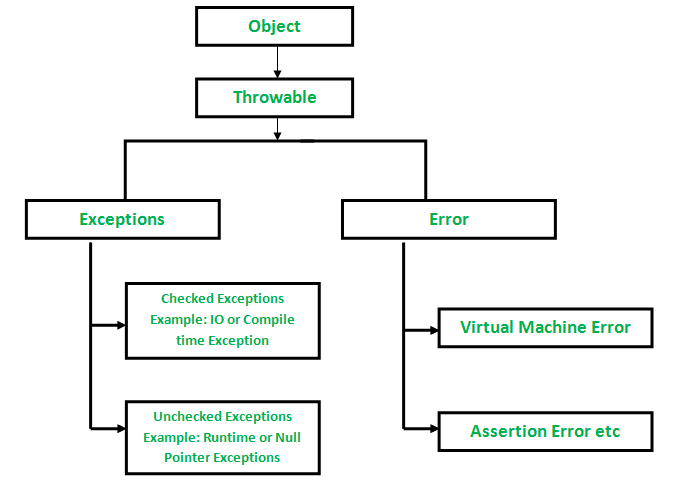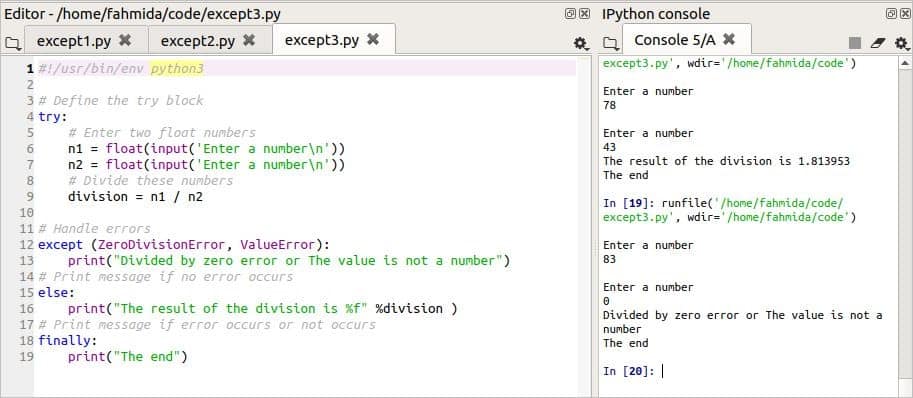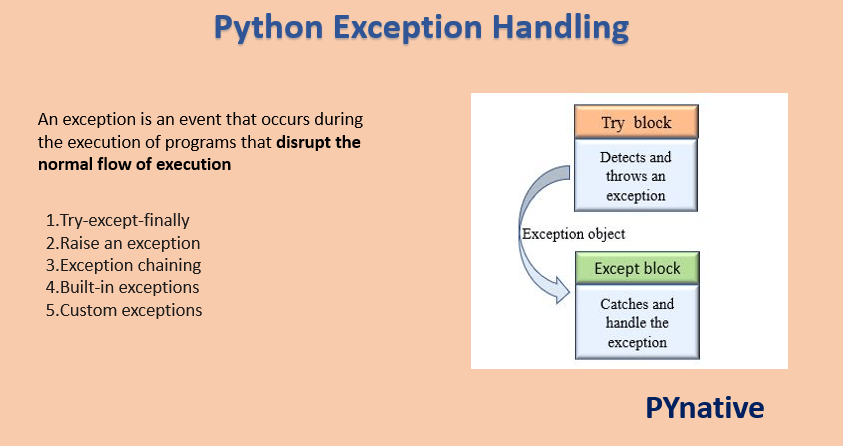Exception Handling Is Best Described as Catching Errors ___________
You can create custom errors with the throw statement. Explains how to handle errors that do not result in an exception being thrown by Reporting Services.

Errors V S Exceptions In Java Geeksforgeeks
If your code does not catch an exception the Java runtime willand it wont be happy about it.

. Try protected code catch ExceptionName e code to handle ExceptionName exception Above code will catch an exception of ExceptionName type. Catching exception is even more misused than throwing it. You must handle the error on the fail flow that is connected to the Failure terminal.
If you want to specify that a catch block should handle. If the backout threshold is reached. Use trycatch blocks around code that can potentially generate an exception and your code can recover from that exception.
Examples include a user providing abnormal input a file system error being encountered when trying to read or write a file or a program attempting to divide by zero. 1a only 2b only 3c only 4a and b 5a and c 6b and c 7a b and c. If you do nothing the exception causes your application to crash.
We have more control over exception handling since the exceptions can be created programmatically. Any errors thrown inside a nonthrowing function must be handled inside the function. Describes how to further enhance the reliability of your application with trycatch blocks.
When something goes wrong an exception is thrown. In computing and computer programming exception handling is the process of responding to the occurrence of exceptions anomalous or exceptional conditions requiring special processing during the execution of a program. Exception handling is an error-handling mechanism.
Handling Warnings and Cases That Do Not Cause Exceptions. This is where you are able to handle the exception log it or ignore it. One exception type can lead to multiple different responses.
Only throwing functions can propagate errors. And what about the tradeoffs. Catch Exception e Systemerrprintln Enter Correct Input.
After try and catch the finally statement allows you to run code regardless of the output. The argument type ExceptionType declares the type of exception that the han-dler can handle and must be the name of a class that inherits from the Throwable 1 class. Throw new Exception.
This reduces tight coupling compared to the ExceptionHandler. You can specify what type of exception you want to catch and this is determined by the exception declaration that appears in parentheses following the keyword catch. Exceptions are bad things that werent supposed to happen.
C try catch finally structure allows guaranteed clean up in event of errors under all circumstances. The details of how this is done depend on. Of a Dagstuhl Seminar Lecture Notes on Computer Science.
Remove mention of RAISERRROR or else relegate it to a footnote. Try A try block is used to encapsulate a region of code. Well this is usually not how Exception handling in Spring works.
One type multiple status codes. You can catch exceptions at various levels of granularity. Use trycatchfinally blocks to recover from errors or release resources.
If a Failure terminal is connected the MQInput node propagates the message to the fail flow. INTERNAL_SERVER_ERRORbodyError Now we are catching any exception at the system boundary right. This section describes best practices for handling and creating exceptions.
Catch When an exception occurs the Catch block of code is executed. Handling Catching Exception When To Catch Exception. Explains how to programmatically handle.
1 Beware Of Pokemon Exception Handling. This exception handling best practices guide talks about when and how to notify the user about different exceptions and when to use custom exceptions. Also you need to remove the return from catch section.
You should have this at the end of your switch. Generating an ErrorCatching the exception. As such THROW and CATCH can of course also be used for building an exception handling-like error system as seen in many contemporary mainstream languages because those exception handling systems are one instance of non-local control flow.
And that dealing is what we call exception handling. Using the Detail Property to Handle Specific Errors. You can catch all exceptions or just check for specific exceptions such as arithmetic exceptions.
B Exception handling allows separation of the programs logic from the error handling logic making software more reliable and maintainable. In all your current examples inside your CATCH clause use THROW as the last statement eg after you rollback the transaction log the error etc so that you dont swallow the exception. If you want to control or prevent roll back you can use the Catch terminal as described in Handling errors in message flows.
But this kind of misuse can lead to a lot of pain when the application reached its maintenance phase. The following paper is a good introduction to some of the issues of writing robust generic components. But since they do happen we need to deal with them.
We use try catch throw and finally statements in JavaScript Exception handling The try statement allows you to check for errors in a block of code. In the following section Ill describe some best practices regarding handling exceptions. Exception handling is responding to exceptions when a computer program runs.
Advantage of Exception Handling The core advantage of exception handling is to maintain the normal flow of the application. An exception occurs when an unexpected event happens that requires special processing. Exception Handling is a mechanism to handle runtime errors such as ClassNotFoundException IOException SQLException RemoteException etc.
We wont have to create as many custom exception classes. On the other hand is the primary method to signal and propagate evaluation errors. A well-designed app handles exceptions and errors to prevent app crashes.
Each catch block is an exception handler and handles the type of exception indicated by its argument. Using the ExceptionHandler annotation. Exception Safety in Generic Components originally published in M.
Follow this answer to receive notifications. If any code throws an exception within that try block the exception will be handled by the corresponding catch. In general an exception breaks the normal flow of execution and executes a pre-registered exception handler.


Comments
Post a Comment